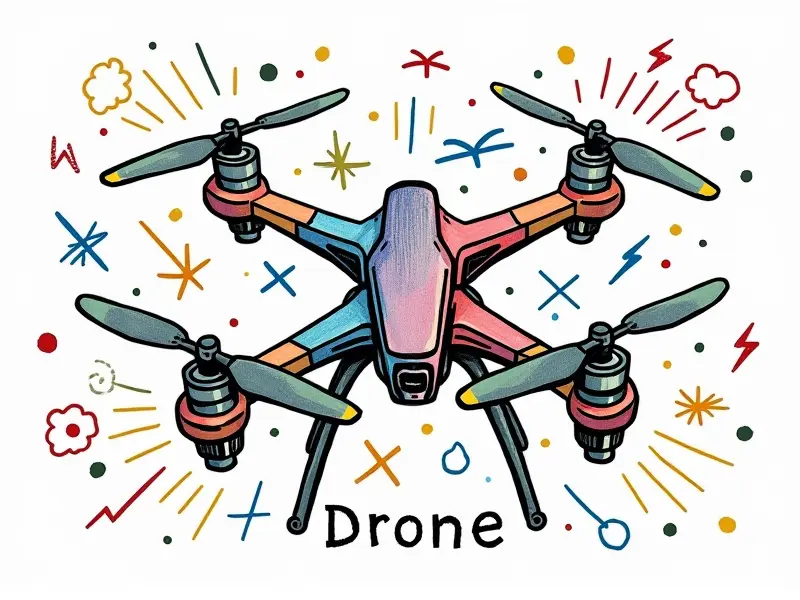What’s prop size for FPV?

Choosing the Right Prop Size for FPV Racing
When it comes to First-Person View (FPV) racing, selecting the right propeller size is crucial. The prop size directly impacts your drone's performance in terms of speed, agility, and efficiency. Understanding how different prop sizes affect these aspects can help you optimize your FPV setup for maximum enjoyment.
Best Props for Maximum Speed in FPV
To achieve the highest possible speeds with your FPV quadcopter, it's essential to choose props that are optimized for velocity. Larger propellers generally offer more thrust at higher RPMs but may sacrifice maneuverability. Commonly used sizes include 5045 and 6045 props, which provide excellent speed without compromising too much on agility.
Perfect Prop Size for FPV Agility
If you prioritize quick turns and nimble flight patterns over raw speed, smaller propellers are your best bet. Props like the 4S or 4120 offer superior maneuverability due to their lower profile and reduced mass. These props allow pilots to execute sharp maneuvers with ease, making them ideal for tight racing courses.
Top Propeller Choices for FPV Racing
The propeller market is vast, but a few brands stand out in terms of quality and performance. Some top choices include:
- Holybro: Known for their high-quality carbon fiber props that offer durability and efficiency.
- T-Motor: Renowned for their precision-engineered props designed to maximize thrust while minimizing noise.
- RacingRC: Offers a wide range of propellers with varying profiles, catering to different racing needs.
Prop Size Guide for FPV Drones
Selecting the right prop size depends on several factors including motor type, battery capacity, and frame design. Here’s a general guide:
- Small Frames (250mm): Use 4120 or 4S props for agility.
- Middle Frames (350-450mm): Opt for 5045 or 6045 props to balance speed and maneuverability.
- Larger Frames (500+ mm): Consider using larger prop sizes like 7045 or 8045 for maximum thrust.
Ideal Prop Sizes for FPV Quadcopters
The ideal prop size varies based on the specific requirements of your quadcopter. For instance:
- High-Speed Racing: 6045 or 7045 props.
- Aerobatic Flight: 4S or 4120 props for quick turns and flips.
- Battery Efficiency: Smaller props like 4120 can help extend flight time by reducing power consumption.
Maximize Speed with Perfect FPV Prop Size
To maximize speed, focus on prop sizes that provide the most thrust at high RPMs. Larger props are generally better for this purpose, but they also require more powerful motors and batteries to achieve optimal performance. Ensure your setup is balanced to avoid overloading components.
Common Mistakes in FPV Prop Selection
Misjudging propeller size can lead to suboptimal performance or even damage to your drone. Common mistakes include:
- Ignoring Frame Design: Choosing props that don’t fit the frame properly.
- Oversizing Props: Using too large a propeller, which can strain motors and reduce efficiency.
- Undersizing Props: Opting for too small a propeller, resulting in insufficient thrust and poor performance.
High Efficiency Props for FPV Drones
To enhance battery life and overall flight duration, opt for high-efficiency props. These are typically designed with aerodynamic profiles that minimize drag while maximizing lift. Look for props made from lightweight materials like carbon fiber to reduce rotational inertia.
Quick Tips: Choosing Props for Your FPV Setup
To make the best propeller choice, consider these quick tips:
- Match Prop Size to Motor Capability: Ensure your props are compatible with your motor's power output.
- Test Different Sizes: Experiment with various prop sizes to find the optimal balance for your specific setup.
- Consult Community Reviews: Leverage online forums and reviews from experienced FPV pilots to get insights on prop performance.
The Impact of Prop Size on FPV Flight
The size of your propellers significantly influences how your FPV drone performs in flight. Larger props offer more thrust but can be less agile, while smaller props provide better maneuverability at the cost of reduced speed. Understanding these trade-offs helps you tailor your setup to meet specific racing or aerial acrobatics requirements.
Conclusion
Selecting the right prop size for FPV racing is a critical decision that can make or break your performance. By considering factors such as frame design, motor capability, and flight objectives, you can choose props that optimize speed, agility, and efficiency. Always test different sizes to find the perfect balance for your setup, ensuring an exhilarating flying experience.

